Nicolas Windpassinger's Blog, page 2
January 16, 2018
How to boost your stock price: launch your cryptocurrency
How cryptocurrency branding can boost a stock price: the Kodak comeback.
Wouldn’t you want a crystal ball to see what the IoT will become and enable? In a complex world and despite all the data and analytics we have, predicting which services and products will conquer the hearts and minds of the customer is more complex than it seems. As the saying goes, “the future is rational only in hindsight.”
A bit of history: the “old” Kodak
In a recent blog (http://nicolaswindpassinger.com/digit...), I highlighted how Kodak had missed their future a couple of decades ago. Making the wrong decisions and not recognizing the opportunities caused them to miss the changing demands of customers in a digital era. These decisions seemed rational to leadership, but the future proved them wrong. The opposite is true as well: making the right decisions for the future today will prove to be rational and valuable later.
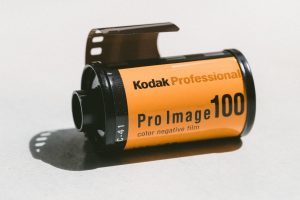
Chunka Mui , in his “How Kodak Failed” article published on January 18th, 2012 on Forbes highlights the following: Barabba (head of market intelligence in 1981) had done a deep dive on the future adoption curves from the analog silver halide films versus the digital photography. He highlighted the fact that digital photography could possibly replace Kodak’s analog base business but also and importantly, that this would not happen overnight and consequently the company had around 10 years to strategize and execute a digital transformation. Barabba sheds light on the fact that executive management was so worried about the digital photography threat, that they executed a strategy based on digital kiosks (10,000). Unfortunately, the team did not realize that the digital photography market would evolve towards home storage and home printing capabilities, and not remain dependent on photography services in these areas.
This example shows that the first ones to enter carry an important portion of the risks implied by testing unproven business models and carrying the R&D costs resulting from multiple available technologies that have not yet proven their relevancy. It also shows the importance of strategic timing that we will deep dive into in the following “false belief” paragraph.
Kodak applied their well-established analog business references (product, margin split, product performance and specification, price points, channels: Kodak digital kiosks) and this later proved difficult to change. Kodak tried to simplify and adapt to technologies, but as illustrated in the example of digital kiosks, doing something and doing the right thing are different things.
Important contrast to Kodak’s failure is Fujifilm’s successful shift.
In his blog entry “How Fujifilm survived”, KNC, the economist explains that Fujifilm realized in the 80s that digital photography was going to be the next big transformation they would face. The executive management, mainly from the very profitable film division, took the decision to milk the analog cow. The slow analog film business fall took 15 to 20 years and went from 60% of Fujifilm’s profits to basically nothing. Kodak and Fujifilm both had quickly identified the trends and possible impact to their profitability.
The branding of the “new” Kodak
It’s interesting to see how Kodak is making a comeback, at least from a branding perspective.
KODAKCoin
They have just launched their cryptocurrency: “KODAKCoin” (https://www.kodak.com/US/en/corp/Press_center/KODAK_and_WENN_Digital_Partner_to_Launch_Major_Blockchain_Initiative_and_Cryptocurrency/default.htm). Here is an extract of the Press release: ”Today Kodak and WENN Digital, in a licensing partnership, announced the launch of the KODAKOne image rights management platform and KODAKCoin, a photo-centric cryptocurrency to empower photographers and agencies to take greater control in image rights management.”

What is interesting to see is that if you try to log into: http://www.kodakcoin.com/, as of today (16/01) the website is not up and running….
Kodak KashMiner
They also attached their name to a Kodak KashMiner computer that enables you to mine bitcoin. Here is an intersting article about it: https://www.engadget.com/2018/01/11/kodak-kashminer-bitcoin-mining-machines/

The issue with the KashMiner is that it’s ROI model is wrong as time and computer power are tightly linked to bitcoin’s ROI. The later you get into the mining space for Bitcoin, the more time and/or computing power is needed to mine a bitcoin; making the KashMiner less and less intersting.
So, what was the impact on their stock price?
Have a look at the stock price extract I just did today; interesting, isn’t it?

Kodak’s CEO Jeff Clarke is making a blunt and clever move to re-brand the company.
Creating a cryptocurrency is not so difficult, just have a look at the list of all the recent ICOs: https://coinmarketcap.com/all/views/all/. The difficulty is to create an ecosystem that drives value into your currency, making it unique and trustworthy. A cryptocurrency is only worth the trust people put into it.
Conclusion
Will Kodak’s crypto be a success; no one knows but if you want your stock to move from 3$ to 10$ in one day, create your cryptocurrency!
About the Book
Understand, master, and survive the Internet of Things with one simple and pragmatic methodology broken down into four steps. Digitize or Die is used by front-line business decision makers to digitize their strategy, portfolio, business model, and organization. This book describes what the IoT is, its impacts and consequences, as well as how to leverage the digital transformation to your benefit.
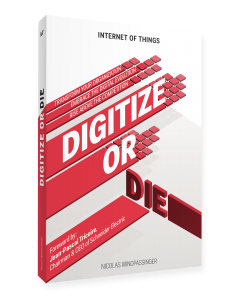
Inside these pages, you will learn:
What the IoT means to all businesses
Why the IoT and the digital revolution is a threat to your business model and survival
What you need to understand to better grasp the problem
The four steps your company needs to follow to transform its operations to survive
About the Author
With 15+ years of computer networking industry experience, Nicolas Windpassinger is the Global Vice President of Schneider Electric’s EcoXpert Partner Program, whose mission is to connect the technologies and expertise of the world’s leading technology providers, pioneer the future of intelligent buildings and the Internet of Things, and deliver smarter, integrated and more efficient services and solutions to customers.
Partner Program, whose mission is to connect the technologies and expertise of the world’s leading technology providers, pioneer the future of intelligent buildings and the Internet of Things, and deliver smarter, integrated and more efficient services and solutions to customers.
As a result of his work, Schneider Electric’s EcoXpert Partner Program has been granted a 5-Star rating in the 2017 Partner Program Guide by CRN®, which is part of The Channel Company group. The 5-Star Partner Program Guide rating recognizes an elite subset of companies that offer solution providers the best partnering elements in their channel programs.
Partner Program has been granted a 5-Star rating in the 2017 Partner Program Guide by CRN®, which is part of The Channel Company group. The 5-Star Partner Program Guide rating recognizes an elite subset of companies that offer solution providers the best partnering elements in their channel programs.
Nicolas has been recognized by The Channel Company’s Top Midmarket IT Executives list. This annual list honors influential vendor and solution provider executives who have demonstrated an exceptionally strong commitment to the midmarket. The Channel Company, has recognized Nicolas as one of 100 People You Don’t Know But Should in the IT channel for 2017.
The post How to boost your stock price: launch your cryptocurrency appeared first on Internet Of Things (IoT) hub.
December 22, 2017
Enabling Digital Transformation: Three Requirements for the IoT Pioneers of Tomorrow (guest blog)
I just wrote a blog for Maciej Kranz (author of the book: Building the Internet of Things); here
Guest post by Nicolas Windpassinger, Global Vice President of Schneider Electric’s EcoXpert Partner Program.
Partner Program.
Wouldn’t you want a crystal ball to see what the Internet of Things (IoT) will become and enable? In a complex world and despite all the data and analytics we have, predicting which services and products will conquer the hearts and minds of the customer is more complex than it seems. As the saying goes, “the future is rational only in hindsight.”
Companies such as Kodak and Polaroid have paid the cost of not recognizing opportunities and missing the changing demands of customers in a digital era. Their decisions may have seemed rational at the time, but the future proved them wrong.
So, how do you know what the customer will want and what will prove to work at scale amid uncertainty and accelerating change?
I believe the companies that pioneer the next phase of digital transformation will have three core characteristics, in addition to the technological and executional skills you would expect. They will need visionary leadership, the ability to evaluate vulnerabilities and take calculated risks, and they will need to pay special attention to middle management, which can make or break transformational change.
1. The Importance of Leadership
Senior leadership sponsorship and oversight are needed to digitally transform a customer experience and an existing portfolio. Leadership needs vision and the ability to make the organization digitally savvy.
 A company’s leaders need to create the conditions for the hyper-awareness and innovation capabilities that are required in digital transformation. These visionary leaders can shape an environment where middle management is involved, the voice of the customer is heard, and early warning signs are not ignored.
A company’s leaders need to create the conditions for the hyper-awareness and innovation capabilities that are required in digital transformation. These visionary leaders can shape an environment where middle management is involved, the voice of the customer is heard, and early warning signs are not ignored.
As a leader, you can’t do everything. There is often someone who will understand the reasons and necessary steps to transform, innovate, and challenge the status quo before others do. Yet those who recognize the need for change often face marginalization and skepticism. A visionary leader will listen to those outlying voices—what I like to call the “digital mine canaries,” who provide an early warning when a company’s strategy or execution are going amiss. Which brings me to the second point.
2. The Importance of the Digital Coal Mine Canary
I introduced the term “digital coal mine canary” in my book, The Internet of Things: Digitize or Die, to explain that to be mature enough to embrace digital transformation, an organization must be willing to be challenged by its own members, and ready to listen to them.
That is precisely why Polaroid missed the boat; they were not digitally mature. Carl Yankoswki joined Polaroid in 1988 as vice president in charge of business imaging, U.S. consumers, and industrial marketing. He quickly identified realized that Polaroid needed to acquire electronic imaging technologies to transform. Unfortunately, two consecutive CEOs would not make room in their strategy for digital technology. A few years later one of them explained, “We knew we needed to change the fan belt, but we couldn’t stop the engine. And the reason we couldn’t stop the engine was that instant film was the core of the financial model of this company.”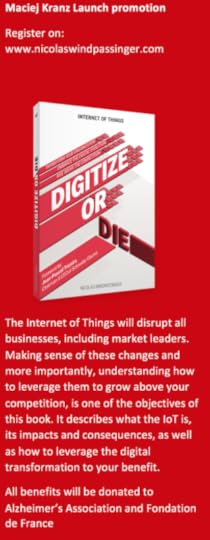
In contrast, rival instant-film maker Fujifilm weathered the same digital disruption by making a clear strategic choice to cannibalize their own market in order to enable the transformation to happen and build a longer-term success.
Such an environment unleashes the opportunity to get early warning detection systems for your business, much like a canary in a coal mine. So, keep in mind that the canaries are not the problem. They offer an opportunity to evaluate vulnerabilities in changing market environments and take strategic risks. As a leader, you need to leverage these early warnings to create value for your customers, your channels, your company, your employees, and your shareholders.
3. The Importance of Middle Management
The Polaroid case clearly shows that even though they had performed thorough market research and could have acquired the technology, executive leadership did not realize the importance of middle management in digital transformation.
Middle management can play an important role in either stifling or accelerating digital transformation. Recent studies seem to show that when dealing with transformation and change in a social organization such as a company, people in the middle will have a tendency to follow the rules at the cost of creativity and innovation. It is the task of executive leadership to set a vision, give a sense to the vision, and create an environment in which employees can challenge the status quo.
Let’s have a look at another well-known company that underestimated the importance of middle management and because of that, nearly vanished: Nokia. This resilient giant has survived many major transformations since 1865, eventually becoming a leading manufacturer in mobile technologies, producing over 100,000,000 mobile phones in 1998. So, what happened?
In 2014, Quy Nguyen Huy, INSEAD Associate Professor of Strategy, and Timo Vuori, Assistant Professor of Strategic Management at Aalto University, interviewed Olli-Pekka Kallasvuo, former CEO of Nokia, on this subject. Their expert opinions were clear: “The problem of Nokia, after all, seems frustratingly similar to those of many large companies such as Microsoft or Sony who could not develop high-quality innovative products fast enough to match their rising competitors. As the companies grew larger and richer, each department became its own kingdom, each executive a little emperor and people were more concerned about their status and internal promotion than cooperating actively with other departments to produce innovative products rapidly… the overriding emotion felt by top managers and middle managers within the organization was one of fear. And yet, it wasn’t necessarily a fear of being fired which pervaded; it was more about fear of losing social status in the organization.”
Middle managers can be very valuable contributors to the execution and the realization of a digital transformation within the company. When they understand the goals and outcomes, as well as risks and threats, middle managers will be better able to embrace IoT to transform the customer experience and create customer and financial value.
Pioneering the next stage of digital transformation is a team sport. You need visionary leaders, digital mine canaries, empowered middle management, hyper-awareness regarding change and finally, ecosystems of innovation expertise in the extended enterprise.
The post Enabling Digital Transformation: Three Requirements for the IoT Pioneers of Tomorrow (guest blog) appeared first on Internet Of Things (IoT) hub.
December 1, 2017
Internet of Things: did you know ? (Video)
I just release my first video on IoT:
The post Internet of Things: did you know ? (Video) appeared first on Internet Of Things (IoT) hub.
IoT Business News: Data Will Be the Next “Oil” (Interview)
This is the first of a series of exclusive articles by Nicolas Windpassinger*, Global Vice President of Schneider Electric’s EcoXpert Partner Program and the author of the IoT book Digitize or Die**.
Data is becoming a key business asset with tangible value. Owning the source of data, building value from it, and improving the business relevancy for customers will be game changers. The game will be less about selling products than owning the relationship and the data. Tomorrow’s winners will be the ones who have managed to not only connect their customers, but have made sense of the consequential flow of data to them.
Yet, we’re only at the start of unlocking the full value of the data at our disposal. The same is true for all the machine-generated and IoT data that exists and will soon become a real data flood. Are we ready to deal with it? And how can we leverage it in a smart, safe, and purposeful way?
The Data “Oil Well”
While data is omnipresent, it can be leveraged in more ways than it is today. While it needs to be turned into value, there are technical challenges to gather these volumes of data.
First is real-time transmission of information from devices such as sensors, which can require far more bandwidth than is available. Consider, for example, a smart operating room in a hospital, which could contain a wide variety of sensing devices to monitor every aspect of a patient’s health including their breathing, heart rate, blood levels, and even skin colour and muscle tone. It’s an overwhelming amount of data that must be analysed in real time as it can literally save lives. Or, take a large office building where contextual data is gathered on all levels, ranging from real-time alerts and meeting room occupancy to smart metering data for regulatory or energy saving goals and pattern detection.
Next, is the aggregation of the data and the intelligence that can be extracted from it. Aggregating data so that it can be useful presents different questions and opportunities alike. Consider a smart city concept with smart homes and buildings across a major metropolitan area; the amount of data is immense and continuous.
 This information is also extraordinarily useful when examined on an aggregate level. Resource usage throughout a city can be predicted by analysing the aggregate data and then factoring in the effects of weather, social events, and other variables. Let’s take the example of a smart stadium that was connected to the surrounding metropolitan area; in a large event, such as a football game, it’s predictable that there will be a surge of traffic as the event begins and ends.
This information is also extraordinarily useful when examined on an aggregate level. Resource usage throughout a city can be predicted by analysing the aggregate data and then factoring in the effects of weather, social events, and other variables. Let’s take the example of a smart stadium that was connected to the surrounding metropolitan area; in a large event, such as a football game, it’s predictable that there will be a surge of traffic as the event begins and ends.
Sensors could report on the number of people in the stadium, and adjust patterns automatically as those people begin to leave the parking area. Businesses in the local area – such as restaurants – which normally close early, could receive notifications of the traffic surge and remain open longer.
The third challenge is the storage and legal ownership of the data. Does the customer own their information? Or, do the companies and businesses which collect information own it? Or, perhaps the data aggregators own the data; or is the data, once personalised information has been removed, available to the public domain? There are also legal aspects to consider such as the data general protection regulation (GDPR), which is intended to strengthen personal data protection in the European Union.
The Forest Behind the Trees: Dark Data
Recently McKinsey & Company calculated that on an oil rig with 30,000 sensors, only one percent of data is examined. Why? Because the data serves a purpose: detecting and controlling anomalies. When used for prediction and optimisation the unused data can create real value, the company stated. There is even more value at stake if you consider that, in practice, we use several data formats and sources in most applications where actionable information and decisions are the outcomes. A pharmaceutical company, for instance, combines IoT data, health data, data from wearables, hospital data, research data, and even genetic data to find new healthcare solutions.
Gartner defines dark data as the information assets organisations collect, process, and store during regular business activities, but generally fail to use for other purposes. You can imagine the opportunities and challenges of detecting, storing, and leveraging dark data.
IoT is the “Pickaxe” and “Shovel” of the Oil Race
The Internet of Things is connecting things with things, people with things, and people with people; this is unleashing an unprecedented flow of data. It will definitively change the way we work, live, and seek entertainment in smart buildings and cities. However, end-to-end connectivity on a broad urban scale has never been deployed. We should not underestimate the societal benefits of such connected ecosystems, which aim to reduce carbon footprints, provide better living conditions, cope with growing and aging populations, and ensure the security, safety, and comfort of citizens, while respecting their data and privacy.
There will also be more and more alternative and distributed sources of energy, which will raise the complexity of connected buildings, smart city ecosystems, and tomorrow’s digital factories. Considering that network infrastructure has evolved over the past 10 years, moving from basic hub to fully routed and intelligent networks, it is a good indicator of what we will experience over the next 10 – 15 years. The digital transformation trends of the industry, intelligent buildings, smart cities, intelligent energy grids, and connected critical power infrastructure in airports and hospitals will have similar impacts, if not greater, than what the internet had on the way we live our everyday life.
Digitize or Die : the IoT book for digital transformation leaders
Read Digitize or Die to learn how to transform your organization and rise above the competition with IoT.
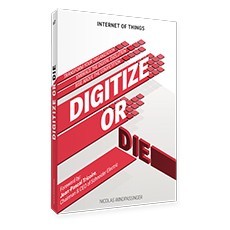
Data sovereignty
Dealing with the aspects of sovereignty (data ownership), IoT data transactions and data exchanges that are inevitable to achieve innovation and transformation beyond the level of the single organisation -and on the level of industrial markets, smart cities, and the types of connected ecosystems as described – is not an easy task.
Transformational programs which are organised on sectorial, local, national, and supra-national scales, such as the European Union’s program for a regulated data market, are being studied and developed today. Their purpose is to create the framework and safe, certified, and regulated contractual mechanisms to not just leverage an organisation’s own data – but to enable innovation and digital transformation using aggregated data and the resulting insights.
There is a new kid on the proverbial block that could solve the transactional data dimension with the same considerations of sovereignty, transactions, and safe contractual methods. That blockchain technology, which promises to be the missing link enabling peer-to-peer contractual behavior without any third party to “certify” the IoT transaction. It also answers the challenge of scalability, single point of failure, time stamping, record, privacy, trust, and reliability in a very consistent way.
Some companies are investing in innovations and programs that enable and equip their partner channels to effectively deliver on this IoT evolution. One such program is Schneider Electric’s EcoXpert Partner Program, which puts the business growth of its partner channel at the forefront of its mission while delivering best-in-class, IoT-enabled solutions to customers such as that offered by the EcoStruxure
Partner Program, which puts the business growth of its partner channel at the forefront of its mission while delivering best-in-class, IoT-enabled solutions to customers such as that offered by the EcoStruxure architecture and platform.
architecture and platform.
Regardless of which technologies or frameworks will be chosen for the further development of IoT and the data opportunities it offers in a value-generating way, we’ve only seen the beginning of the true potential of IoT data as we enter the next stages in collaborative and connected ways.
* About the Author
Nicolas Windpassinger
With 15+ years of computer networking industry experience, Nicolas Windpassinger is the Global Vice President of Schneider Electric’s EcoXpert
 Partner Program, whose mission is to connect the technologies and expertise of the world’s leading technology providers, pioneer the future of intelligent buildings and the Internet of Things, and deliver smarter, integrated and more efficient services and solutions to customers.
Partner Program, whose mission is to connect the technologies and expertise of the world’s leading technology providers, pioneer the future of intelligent buildings and the Internet of Things, and deliver smarter, integrated and more efficient services and solutions to customers.As a result of his work, Schneider Electric’s EcoXpert
 Partner Program has been granted a 5-Star rating in the 2017 Partner Program Guide by CRN®, which is part of The Channel Company group. The 5-Star Partner Program Guide rating recognizes an elite subset of companies that offer solution providers the best partnering elements in their channel programs.
Partner Program has been granted a 5-Star rating in the 2017 Partner Program Guide by CRN®, which is part of The Channel Company group. The 5-Star Partner Program Guide rating recognizes an elite subset of companies that offer solution providers the best partnering elements in their channel programs.Nicolas has been recognized by The Channel Company’s Top Midmarket IT Executives list. This annual list honors influential vendor and solution provider executives who have demonstrated an exceptionally strong commitment to the midmarket. The Channel Company, has recognized Nicolas as one of 100 People You Don’t Know But Should in the IT channel for 2017.
** About the Book
Understand, master, and survive the Internet of Things with one simple and pragmatic methodology broken down into four steps. Digitize or Die is used by front-line business decision makers to digitize their strategy, portfolio, business model, and organization. This book describes what the IoT is, its impacts and consequences, as well as how to leverage the digital transformation to your benefit.
Inside these pages, you will learn:
What the IoT means to all businesses
Why the IoT and the digital revolution is a threat to your business model and survival
What you need to understand to better grasp the problem
The four steps your company needs to follow to transform its operations to survive
The post IoT Business News: Data Will Be the Next “Oil” (Interview) appeared first on Internet Of Things (IoT) hub.
November 22, 2017
IoT Tech News: why culture trumps technology in IoT adoption (Interview)
The Internet of Things (IoT) is coming into the enterprise; there is no doubt about that. The thought of the work executives have to undertake in their organisation to accommodate digital transformation is only eclipsed by the thought of what happens if their firm gets left behind. In other words, if you don’t digitize, you die.
Not this correspondent’s words – but those of Nicolas Windpassinger (pictured), global partner program vice president at Schneider Electric. His new book (left) offers little in the way of compromise. “The title is a good explanation that you need to change, you need to evolve, all of us, personally and professionally,” he tells IoT News. “If you don’t evolve or learn, you’ll die, and your competition is going to take care of you.”
The window of opportunity to take advantage of IoT, Windpassinger argues, is gradually shutting. But the problem has always been the lack of magic formula to make things work. If it were so easy, everyone would be doing it by now; we wouldn’t have to wear out shoe leather pounding round industry events, or reading every analyst report we can get our hands on.
For Windpassinger, this point of getting past the ‘you want to succeed, you need to be IoT’ one size fits all mentality is key. Companies – and company cultures – differ. “It’s very interesting,” he says. “If you go to an IoT event, you look at the startups, you look at the companies… they’re selling technology, but what are they solving? What is their core value proposition?
“Very often we say to succeed in the IoT you need to be a startup. Well the reality is that it’s not true, and there’s quite a bit of literature on that,” adds Windpassinger. “If you are a pioneer, and you have been very successful in your marketplace, it’s easier for big or medium-sized companies with a strong legacy of customers to digitize from the edge.
“Everybody talks about Uber – they’re always the same stories. They’re really the exception – if you look at the literature, a small company has a lot of difficulty to beat a well-established pioneer.”
Yes, there is no magic formula, no one page or sentence that enables organisations of all sizes just to flick a switch and ‘become IoT’. However, whatever the size of your organisation, as the book details, there are common steps that can be taken. The book outlines what it calls an IoT4 methodology, going through each section; how the IoT structures itself from a technology perspective; offering differentiation strategies; different business models; and transitioning from an analogue to a digital customer experience. If you don’t know the rules of the game, how can you expect to win, as the prologue puts it?
Don’t expect this book to be a tech-heavy trudge, though. This is for two reasons; firstly, anyone who has read such tomes knows the majority of the material is out of date by the time it hits the shelves; and secondly, because it’s difficult to predict how the market – particularly though standardisation – will go.
On the standards issue, Windpassinger recounts being at an industry event a couple of weeks ago, and the impression was clear. “You look at all those standards, it’s just crazy,” he says. “Everybody is designing their alliance, or their ecosystem based on their specific use case, or based on [something else]… since there is no global standard, everybody teams up.
“Is it going to last like this? Are some of the consortia going to team up and try to go for these global standards? Honestly, I don’t really know, and I don’t think anyone on the market really knows where it’s going to go.”
Neither is Digitize or Die a guide to help organisations sort out their customer value proposition – the book assumes companies already have that bit tied down – but where the book excels is around giving examples of companies who have successfully digitised, alongside companies who failed, as well as how the cultural side, instead of the technological focus, remains a key theme.
“The middle management is key to successful or unsuccessful digital transformation,” says Windpassinger. “It’s an education book for the middle management – or the top leaders who can use the book towards their middle management to initiate change.
“The core idea of the book is really that digital transformation is a people transformation more than a technology transformation, and to be able to initiate change at the management level, it’s about educating those people, creating a sense of urgency amongst them, and be able to explain to them,” he adds. “Yes, it’s a threat, yes, it’s a struggle, we as a company can choose not to do anything, but in a couple of years it’s going to be very difficult, or we consider that we need to transform ourselves as a company – and this begins by educating people about the different options.”
Editor’s note: You can find out more about Digitize or Die and purchase it here. All benefits from the book will be donated to the Alzheimer’s Association and Fondation de France. You can learn more about the book here.
Read more: Digitize or Die book extract: The importance of leadership and middle management for IoT
The post IoT Tech News: why culture trumps technology in IoT adoption (Interview) appeared first on Internet Of Things (IoT) hub.
November 20, 2017
‘Digitize or Die’ is out now !
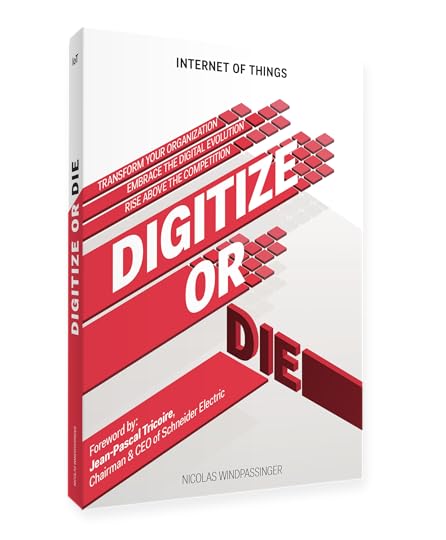
The Internet of Things is at its inflection point. The window of opportunity to take advantage of IoT is rapidly closing – Digitize or Die helps your business to seize it.
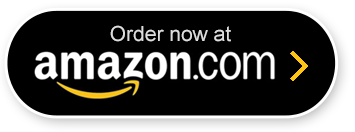
TESTIMONIALS
Nicolas’s book is all about the Internet of Things (IoT). Not only is it about IoT technologies; it traces how the IoT is changing the way companies must operate in the coming decades to survive and thrive with redesigned strategies, go-to markets, and portfolios.
Jean-Pascal Tricoire
Chairman and CEO, Schneider Electric
Becoming digital is not an option for any company anymore. You either digitize or die. In that sense: reading that book should not be considered optional. Excellent book and I am tremendously honored that relayr is featured. A true must read
Josef Brunner
CEO, Relayr
Digitize or Die provides a clear and comprehensive survival kit to every person that wishes to understand the new digitalization revolution and how to leverage it in an effective manner
Yaron Eppel
CEO, Mobideo
Digitize or Die is not a technology book, it is an explanation about the profound impact of the acceleration of time in our world, and how to rethink the way we work, build products or companies in this context. If you are not convinced that we are living through an unprecedented era of change, then the first chapters of the book will provide striking examples of the acceleration of innovation cycles in the last century.
Olivier Hersent
Chairman & Chief Technology Officer, Actility
Very interesting content and good insights in the options and challenges when selecting partners and technologies for your IoT solutions.
Ir Jaap Groot
VP of Business Development at Semtech and Board Member of the LoRa Alliance, Semtech
Digitize or Die provides a roadmap and detailed methodology to help business and technology leaders navigate the digital transformation of their organizations to take full advantage of the promise of IoT. The book looks at the complex challenges that face business trying to transform themselves and breaks down the decisions and choices.
Ed Maguire
Insights Partner, Advisory, Momenta Partners
As this helpful book explains, the physical world is being animated -- becoming smart and interconnected. In fact, the answer is the starting point of your journey: education. Read about Blockchain and Artificial Intelligence as they will change the world. Your next step is in fact a couple of pages ahead; turn them to understand the IoT rules of the game and learn how to use them to your benefit.
Don Tapscott
CEO & ranked by Thinkers 50 as the world’s most influential leader in digital thinking, as well as the second-most influential living management thinker overall, Tapscott Group
The book offers a no-nonsense overview of the IoT in a context of digital transformation
J-P De Clerck
CEO, I-Scoop
The Internet began to disrupt businesses that distributed information and goods in the 1990s. Today we have a new set of market leaders in media, retail, and information services, along with a graveyard of former leaders. In Digitize or Die, Nicolas provides a pragmatic roadmap to help companies anticipate the transformations caused by the extension of the Internet to the physical world. The coming digital transformation will impact even the most analog industries. Business leaders are well advised to read and internalize the strategies and tools that Nicolas provides to differentiate their businesses in a digital world.
Erik Walenza-Slabe
CEO, IoT ONE
WHY READ THE BOOK?
My commitment to you: filling your digital gap.
If you commit to stay with me throughout this book, I promise to:
01
give you the knowledge to understand what lies behind the fancy acronyms and digital mirage.
02
give you simple in depth examples of companies that successfully digitized their business models as well as companies that have died from poor digitization strategy and execution.
03
give you access to information represented as infographics in order to help you quickly grasp the heart of what the IoT is about
04
help you define your digitization strategy
05
help you understand the importance of people and a digital savvy organization when executing a digitization strategy

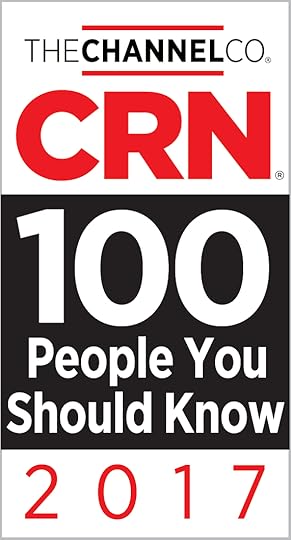
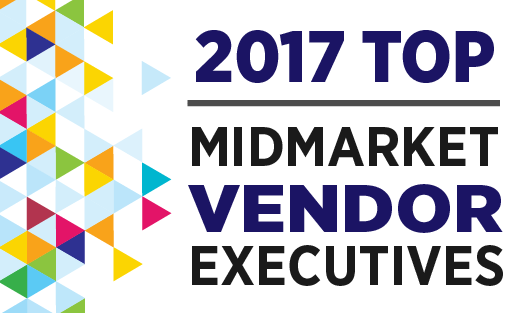
With 15+ years of computer networking industry experience, Nicolas Windpassinger is the Global Vice President of Schneider Electric’s EcoXpert Partner Program, whose mission is to connect the technologies and expertise of the world’s leading technology providers, pioneer the future of intelligent buildings and the Internet of Things, and deliver smarter, integrated and more efficient services and solutions to customers.
Partner Program, whose mission is to connect the technologies and expertise of the world’s leading technology providers, pioneer the future of intelligent buildings and the Internet of Things, and deliver smarter, integrated and more efficient services and solutions to customers.
As a result of his work, Schneider Electric’s EcoXpert Partner Program has been granted a 5-Star rating in the 2017 Partner Program Guide by CRN®, which is part of The Channel Company group. The 5-Star Partner Program Guide rating recognizes an elite subset of companies that offer solution providers the best partnering elements in their channel programs.
Partner Program has been granted a 5-Star rating in the 2017 Partner Program Guide by CRN®, which is part of The Channel Company group. The 5-Star Partner Program Guide rating recognizes an elite subset of companies that offer solution providers the best partnering elements in their channel programs.
Nicolas has been recognized by The Channel Company’s Top Midmarket IT Executives list. This annual list honors influential vendor and solution provider executives who have demonstrated an exceptionally strong commitment to the midmarket.
The Channel Company, has recognized Nicolas as one of 100 People You Don’t Know But Should in the IT channel for 2017.
All benefits will be donated to these worthwhile causes:
Alzheimer’s Association (www.alz.org), which provides care and support for all those affected by Alzheimer’s and other dementias
Fondation de France (www.fondationdefrance.org), which supports projects in complex fields, such as education, research and social integration


The post ‘Digitize or Die’ is out now ! appeared first on Internet Of Things (IoT) hub.
November 16, 2017
IMELCO Global Circuit Newsletter
Here is the latest article I did in IMELCO’s Global circuit newsletter. You can download it here
Data Will Be the Next “Oil”
Data is becoming a key business asset with tangible value. Owning the source of data, building value from it, and improving the business relevancy for customers will be game changers. The game will be less about selling products than owning the relationship and the data. Tomorrow’s winners will be the ones who have managed to not only connect their customers, but have made sense of the consequential flow of data to them.
Yet, we’re only at the start of unlocking the full value of the data at our disposal. The same is true for all the machine-generated and IoT data that exists and will soon become a real data flood. Are we ready to deal with it? And how can we leverage it in a smart, safe, and purposeful way?
The Data “Oil Well”
While data is omnipresent, it can be leveraged in more ways than it is today. While it needs to be turned into value, there are technical challenges to gather these volumes of data.
First is real-time transmission of information from devices such as sensors, which can require far more bandwidth than is available. Consider, for example, a smart operating room in a hospital, which could contain a wide variety of sensing devices to monitor every aspect of a patient’s health including their breathing, heart rate, blood levels, and even skin colour and muscle tone. It’s an overwhelming amount of data that must be analysed in real time as it can literally save lives. Or, take a large office building where contextual data is gathered on all levels, ranging from real-time alerts and meeting room occupancy to smart metering data for regulatory or energy saving goals and pattern detection.
Next, is the aggregation of the data and the intelligence that can be extracted from it. Aggregating data so that it can be useful presents different questions and opportunities alike. Consider a smart city concept with smart homes and buildings across a major metropolitan area; the amount of data is immense and continuous.
This information is also extraordinarily useful when examined on an aggregate level. Resource usage throughout a city can be predicted by analysing the aggregate data and then factoring in the effects of weather, social events, and other variables. Let’s take the example of a smart stadium that was connected to the surrounding metropolitan area; in a large event, such as a football game, it’s predictable that there will be a surge of traffic as the event begins and ends.
Sensors could report on the number of people in the stadium, and adjust patterns automatically as those people begin to leave the parking area. Businesses in the local area – such as restaurants – which normally close early, could receive notifications of the traffic surge and remain open longer.
The third challenge is the storage and legal ownership of the data. Does the customer own their information? Or, do the companies and businesses which collect information own it? Or, perhaps the data aggregators own the data; or is the data, once personalised information has been removed, available to the public domain? There are also legal aspects to consider such as the data general protection regulation (GDPR), which is intended to strengthen data protection in the European Union.
The Forest Behind the Trees: Dark Data
Recently McKinsey & Company calculated that on an oil rig with 30,000 sensors, only one percent of data is examined. Why? Because the data serves a purpose: detecting and controlling anomalies. When used for prediction and optimisation the unused data can create real value, the company stated. There is even more value at stake if you consider that, in practice, we use several data formats and sources in most applications where actionable information and decisions are the outcomes. A pharmaceutical company, for instance, combines IoT data, health data, data from wearables, hospital data, research data, and even genetic data to find new healthcare solutions.
Gartner defines dark data as the information assets organisations collect, process, and store during regular business activities, but generally fail to use for other purposes. You can imagine the opportunities and challenges of detecting, storing, and leveraging dark data.
IoT is the “Pickaxe” and “Shovel” of the Oil Race
The Internet of Things is connecting things with things, people with things, and people with people; this is unleashing an unprecedented flow of data. It will definitively change the way we work, live, and seek entertainment in smart buildings and cities. However, end-to-end connectivity on a broad urban scale has never been deployed. We should not underestimate the societal benefits of such connected ecosystems, which aim to reduce carbon footprints, provide better living conditions, cope with growing and aging populations, and ensure the security, safety, and comfort of citizens, while respecting their data and privacy.
There will also be more and more alternative and distributed sources of energy, which will raise the complexity of connected buildings, smart city ecosystems, and tomorrow’s digital factories. Considering that network infrastructure has evolved over the past 10 years, moving from basic hub to fully routed and intelligent networks, it is a good indicator of what we will experience over the next 10 – 15 years. The digital transformation trends of the industry, intelligent buildings, smart cities, intelligent energy grids, and connected critical power infrastructure in airports and hospitals will have similar impacts, if not greater, than what the internet had on the way we live our everyday life.
Data sovereignty
Dealing with the aspects of sovereignty (data ownership), IoT data transactions and data exchanges that are inevitable to achieve innovation and transformation beyond the level of the single organisation -and on the level of industrial markets, smart cities, and the types of connected ecosystems as described – is not an easy task.
Transformational programs which are organised on sectorial, local, national, and supra-national scales, such as the European Union’s program for a regulated data market, are being studied and developed today. Their purpose is to create the framework and safe, certified, and regulated contractual mechanisms to not just leverage an organisation’s own data – but to enable innovation and digital transformation using aggregated data and the resulting insights.
There is a new kid on the proverbial block that could solve the transactional data dimension with the same considerations of sovereignty, transactions, and safe contractual methods. That blockchain technology, which promises to be the missing link enabling peer-to-peer contractual behavior without any third party to “certify” the IoT transaction. It also answers the challenge of scalability, single point of failure, time stamping, record, privacy, trust, and reliability in a very consistent way.
Some companies are investing in innovations and programs that enable and equip their partner channels to effectively deliver on this IoT evolution. One such program is Schneider Electric’s EcoXpert Partner Program, which puts the business growth of its partner channel at the forefront of its mission while delivering best-in-class, IoT-enabled solutions to customers such as that offered by the EcoStruxure
Partner Program, which puts the business growth of its partner channel at the forefront of its mission while delivering best-in-class, IoT-enabled solutions to customers such as that offered by the EcoStruxure architecture and platform.
architecture and platform.
Regardless of which technologies or frameworks will be chosen for the further development of IoT and the data opportunities it offers in a value-generating way, we’ve only seen the beginning of the true potential of IoT data as we enter the next stages in collaborative and connected ways.
The post IMELCO Global Circuit Newsletter appeared first on Internet Of Things (IoT) hub.
November 7, 2017
Insight Vector: Digitize or Die (Interview)
Innovation and market perspectives from leading IoT thought leaders
Nicolas Windpassinger spoke to Momenta about his new book Digitize or Die, which provides a roadmap and detailed methodology to help business and technology leaders navigate the digital transformation of their organizations to take full advantage of the promise of IoT. The book looks at the complex challenges that face business trying to transform themselves and breaks down the decisions and choices. All revenues will be donated to Alzheimer’s Association (www.alz.org), which provides care and support for all those affected by Alzheimer’s and other dementias and Fondation de France (www.fondationdefrance.org), which supports projects in complex fields, such as education, research and social integration.

Nicolas Windpassinger
Author of “Digitize or Die”

With 15+ years of computer networking industry experience, Nicolas Windpassinger is the Global Vice President of Schneider Electric’s EcoXpert Partner Program, whose mission is to connect the technologies and expertise of the world’s leading technology providers, pioneer the future of intelligent buildings and the Internet of Things, and deliver smarter, integrated and more efficient services and solutions to customers.
Partner Program, whose mission is to connect the technologies and expertise of the world’s leading technology providers, pioneer the future of intelligent buildings and the Internet of Things, and deliver smarter, integrated and more efficient services and solutions to customers.
As a result of his work, Schneider Electric’s EcoXpert Partner Program has been granted a 5-Star rating in the 2017 Partner Program Guide by CRN® of The Channel Company group. The 5-Star Partner Program Guide rating recognizes an elite subset of companies that offer solution providers the best partnering elements in their channel programs.
Partner Program has been granted a 5-Star rating in the 2017 Partner Program Guide by CRN® of The Channel Company group. The 5-Star Partner Program Guide rating recognizes an elite subset of companies that offer solution providers the best partnering elements in their channel programs.
Nicolas has been recognized by The Channel Company’s Top Midmarket IT Executives list. This annual list honors influential vendor and solution provider executives who have demonstrated an exceptionally strong commitment to the midmarket.
Q&A
Can you share a bit of your background and what led you to write the book?
My background is in IT, sales and systems integration, and I understand both technology and the business side. I saw that it was a nightmare to understand what’s going on around IoT – there are so many acronyms and technology trends, companies are trying to rebrand themselves. The book is meant to help people navigate the landscape.
Most books I saw were very technical. I wanted to help the CTO of a manufacturer that needs to digitalize the company, who doesn’t know where to start. How do you digitize a portfolio from analog to digital in a technical and business approach to embrace the IoT landscape? I couldn’t find it – so I wrote the book.
What were experiences that led you to develop the methodologies you share in the book?
It’s very difficult to make things simple – you need to understand how IoT is different. You have sensors, gateways, standards, business models etc. From an IT structure you have technology layers – within these layers there are different topologies depending on the goal – this can include platforms, solutions, and whole verticals. There is also the choice of business model and the customer experience. Customer experience is the starting point and the end point. I tried to make this simple and logical to try to simplify the complexity and details.
Were there any great examples?
I looked at Nokia, Kodak, and other companies that provide cautionary examples. Michelin is a great example of transformation from selling tires to selling kilometers. They started their transformation in 2001, and now they have over 500,000 vehicles completely connected. They sell they tires, connect the customer and provide a complete experience. This a process that’s taken 15 years but which accelerated a lot in the last 2 years because we can connect networks and sensors are much cheaper. If they started today it would go much faster.
What are some of the market misconceptions that you are seeing?
One is a common belief that the first mover in a digitizing market takes it all. The facts show a different reality; timing is indeed the number one success factor, but pioneers, on average, lose their leadership in less than 12 years leapfrogged by later entrants. The first entrant to the market pays a high price in R&D and marketing, helping latecomers benefit from this by improving the business model, technologies and so forth. Another belief is that start-ups are better positioned to beat well-established “analog” companies. Analog companies have advantages to defend themselves and even lead the digital transformation, especially if they leverage their resources well. With the advantages of time and assets, it’s not too late for incumbents to adapt; in fact they have what they need to lead and beat competition by adapting to the new rules of the game.
How do you view the impact of IoT ?
IoT changes the rules of the game. The disruptive business models adopted by Airbnb and Uber illustrate how severe the impact a digitization approach can have on well established markets. Manufacturers need to be nimble and ready to pivot hard as this technological evolution progresses. Changes happen quickly in technology and the marketplace.
What have you learned from studying the market?
Incumbents need to transform themselves into digital enterprises if they want to survive. Getting digital is not about investing in the latest technologies- it is about setting up a strategy with the proper timing and dedicating the proper digital capabilities – people, business plans, operations, etc – to execute on this same strategy. When studying companies that have tackled change and market disruption in the last decade, data shows that there are in fact four possible strategies available.
Option #1 – Ignore
Option #2 – Milk the cow
Option #3 – U-turn the mothership
Option #4 – Transforming from the edge
The best option is #4, which is to maintain your existing markets and channels – keep the mothership afloat – while investing money into creating a new opportunity at the edge of your core offer. You could liken this to an organ transplant – keep the body alive while you change out the other parts for newer and more modern parts.

What IoT books have you read and did you like yourself?
I would highly recommend the following books for different reasons: The World Economic White Paper, Digital transformation of industries. 2016 for its vision and clarity on possible strategies, Edge Strategy: A new mindset for profitable growth for its methodology that makes the link between a strategy and the execution of it and Adam Grant’s Originals: How Non-conformists Change the World which highlights the role of individuals in transformation and digitization of a business and the importance of execution.
The post Insight Vector: Digitize or Die (Interview) appeared first on Internet Of Things (IoT) hub.
June 14, 2017
IoT: Top 3 Analog Companies Digitization Challenges
The word “analog” describes companies that have not gone through a digital transformation. In marketplaces typically dominated by analog company-derived products and services, the rules are not only changing, but in many cases, entirely new games with radically different playing fields are evolving. Industries and markets that didn’t exist just a few short years ago, are sprouting up everywhere.
There are thousands of young companies creating new products, services, business models, and ecosystems which have already begun to revolutionize the world. In the coming years, these companies and others to follow will encroach on the more traditional markets and if nothing is done, any company, no matter how large, might be negatively impacted, and shareholders will likely see their stock values reduced.
Both young companies and “analog” companies face the same drivers:
Large IoT investments
Low-cost sensors
High mobile adoption
Expanded internet connectivity
and the same barriers:
Security concerns
Privacy concerns
Implementation problems
Technological fragmentation
The Weapons Available to Analog Companies to Fight Back
In a recent post I wrote about the IoT false beliefs. One would think that to successfully leverage the IoT, you need to be a start-up when the reality is that late incumbents benefit from the mistakes of the others when they enter a specific market.
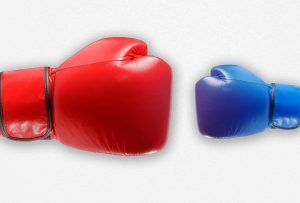 Analog companies have weapons at their disposal to fight back and even lead the digital transformation. It’s not too late for incumbents/analog companies to adapt, especially if they leverage their considerable assets and resources to counteract off the attacks. The World Economic Forum has issued a great White Paper on this subject.
Analog companies have weapons at their disposal to fight back and even lead the digital transformation. It’s not too late for incumbents/analog companies to adapt, especially if they leverage their considerable assets and resources to counteract off the attacks. The World Economic Forum has issued a great White Paper on this subject.
These assets include:
Investment capital
Production capabilities
Strong brands
Strong channels
In-depth relationships with global accounts
Mobilization of Sales force on the ground
Influence power: standardization, market price, specifiers, etc.
If you are an analog company: perhaps you feel that you have your analog business sewn up tightly enough that you don’t need to worry about any of the changes that are happening. Or you might not see significant opportunities in adopting or incorporating these new technologies into your strategies. Possibly, you even believe that your products don’t fit this new market, or that you have plenty of time to consider your options carefully—and that in short, you can gradually and even slowly move into this brave new world.
Unfortunately, in the meantime, your competitors may have already defined digital transformation strategies and be in the process of implementing solutions that could jeopardize your business and traditional market share and in a worst-case scenario, even drive you completely out of your marketplace.
Analog companies have weapons to fight back; but what are the 3 digitization challenges ?
Number 1: people and organizations
The biggest challenge of the transition to the IoT lies in the human factor. A company is, among all hard and soft assets, made up primarily of a group of people. In fact, the most valuable corporate assets are oftentimes the people it employs.
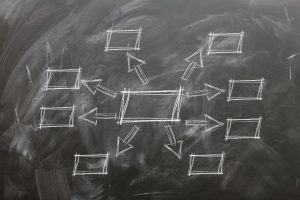
Middle management plays a pivotal role when dealing with digital transformation.
Analog company leaders willing to embrace the Internet of Things should help the company’s middle management to understand the goals and outcomes, as well as the risks and threats to the existing business.
Setting a vision and giving a purpose to the mission is not only about defining what needs to be done. It is ultimately about creating the environment in which employees can challenge the status quo, creating enhancements to the business model, processes, products, and services, as well as the corporation itself.
For managers in traditional industries, this can be a tall order. Many current CTOs come from a “good old analog” industry and must discover and learn about the digital side of the coin instead of focusing only on their R&D. Applying yesterday’s successful recipe will no longer work. Many assumptions about what is
possible and impossible, based on experience with last century’s technologies, are no longer valid in the digital world. How do you move beyond your current mindset to find opportunities that digital technology can support and enable?
The challenge is how to make those people understand the new realities and how to bring solutions to them. They have tremendous experience and understand the marketplace, so it is vital to include transitioning the existing workforce as part of your strategy.
My book, Digitize or Die, focuses on the importance of the ‘why’. The challenge resides in the digital transformation of middle management.
Number 2: explaining the ‘How?’
As stated in previous chapters, analog leaders that have to deal with digital transformation of their business model (including the consequences and potential disruptions of IoT) are faced with four possible choices:
Ignore
Milk the cow
U-turn the mothership
Transforming from the edge
Considering the following:
Digitization and IoT in particular, can drive your financial performance
That “transforming from the edge” is the right strategy for your company to leap frog your competition
And in order to avoid commoditization, you need to adapt your current analog offer portfolio to make it more “IoT compatible”. You must also define offering differentiation strategies and choose the most relevant business models.
If all three of these are addressed, you still need to clarify the how. In other words, how will you make it happen and are there different options? Typically, once you have clarified your strategic moves, the next question you should ask is ‘How will you execute the transformation’?
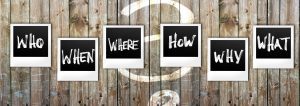
There are five execution strategies (none is mutually exclusive) when dealing with digital transformation which perfectly apply to the “transforming from the edge” strategic option:
Build
Building is a good option if you are ready to create independent internal organizations (internal startups) from the core to achieve your goals. Studies show that organizations operating independently from their parents are more innovative and have higher market-penetration rates than those that had remained integrated. Companies wanting to transform from the core or even from the edge but with non-autonomous ventures or organizations, under-perform those with separated entities. Even with fully autonomous ventures, they need to be treated as startup and should address at least the following:
Limited, step funding and strong financial oversight to avoid the “no money and time limit” syndrome that internal startups in big corporations very often face.
Appoint senior managers, risk, compliance and control ‘relationship managers’ with an entrepreneurial and pro-active attitude to work closely together with the startup.
Let the startup make its own decisions in running their business in all of its aspects—technology, operations, HR, etc. aspects
Acquire – Buy
If you need to move quickly you may find yourself following an acquisition strategy to purchase your way into the new paradigm. Acquiring is not a strategy in and of itself; it’s really about the synergy with the acquired company, in a way to ideally accomplish your strategic move.
Partner or Ally
Another option is to partner with other businesses to build alliances which move your corporation into the new paradigm. Partnering or Allying to enhance joint development relationships can be a very productive way to accelerate your market penetration if the counterpart has made the same effort to clarify their strategic options and moves to tackle what IoT’s accessible growth can create.
Invest
Invest in companies which will help move your business towards the digital revolution. Putting in place the venture capital for early and later venture investments should facilitate market access or joint development agreements.
Co-develop
Work with developers all over the world to help you create the IoT products and services you will need.
Number 3: Explaining the ‘Why?’

As stated before, we do not want to give any guidance regarding which execution strategy might be best suited in each case and company. However, this resource’s detailed description will give you a relevant list of options.
When you have defined which IoT strategy fits your circumstances and the associated execution strategy, your next hurdle is the internal communication you need to put in place to streamline your execution.
Explaining the ‘Why’ and the ‘How’ are as important as defining them.
Usually companies focus on their customers, on their channels, and on their branding towards those who sell and buy their products, software, services, and so forth. However, they often underestimate the importance of internal communication. It is vital for companies to explain to their employees the how and the why.
Unfortunately, the attitude often is “Employees are there to be doing what they are told, so why bother explaining to them the how and the why?” If this is your belief – if this is how you perceive the core resource of an enterprise – then change management will not be your cup of tea. Change is all about people, and it is all about communicating and enhancing change in the mind of people the enterprise stands for. If you wish to drive and succeed in change management, then communication is at the core.
Chip Heath and Dan Heath, in their book Made to Stick, shed the light the importance of internal communication towards employees when there are strategic choices made that require changes in behaviors as well as the understandings that trigger those. They highlight in particular the importance of guiding those behaviors: “If your frontline employees can talk about your strategy, can tell stories about it, can talk back to their managers and feel credible doing so, then the strategy is doing precisely what it was intended to do: guide behavior”.
Tell your strategy as a story to make it realistic and understandable for middle management. Use a common language to be understood by all your companies’ employees. Being practical and down to earth are important aspects of useful communication when dealing with change. If you are a leader of a legacy analog company, you must perfect these communications.
YOUR EDUCATION IS THE KEY TO SUCCESSFUL DIGITIZATION
I very often meet people that are afraid to ask the questions that, in fact, everyone is looking to have an answer to such as:
What is the IoT?
What does it mean?
How can I benefit from it?
What are the technologies out there?
and so forth.
‘A fool thinks himself to be wise, but a wise man knows himself to be a fool.’ William Shakespeare
[image error]You might be finding a lot of commercial and marketing IoT books but very often with a lack of strategic guidance, or anecdotal reference to what companies are facing. None of the technology books and blogs expanded on the IoT, beyond the pure technology element, in a way that would help companies understand how to transform, leverage themselves and supersede their competition.
I want to bring an answer to those questions through blogs, interviews and books such as ‘Digitize or Die’.
Learn more about ‘Digitize or Die’
The post IoT: Top 3 Analog Companies Digitization Challenges appeared first on Internet Of Things (IoT) hub.




